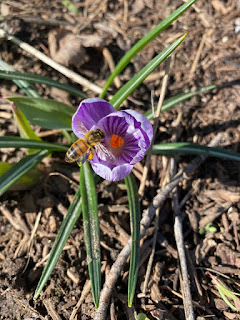"A garden is always a series of losses set against a few triumphs, like life itself."
-May Sarton
As you look at the mass amounts of photos in the recaps of the last three years it's easy to look at those and say, "Man, this James the urban farmer guy has this whole thing figured out, look at him go!" While I know more than I did when I started doing this, the reality is I still know very little compared to a lot of other people who farm for a living. There's so much to know and a lot of it can be very specific to the area that you live in. One of these days when I feel like my farming knowledge is more up to snuff it would be really fun to travel to a different part of the country (or a different country completely) and try and do the same thing just to see if I can do it and if it's just like starting from square zero again. Behind those great looking photos that you saw in my previous posts is a lot of hard work along with quite a lot of blood, sweat, and tears. It's way too easy to only focus on the positive aspects of the urban farm and to spin it as a complete walk in the park. I'm trying fairly hard to put a realistic view on everything that goes into trying to gain independence from the major food system that's in place in the U.S. As I was putting together those previous posts I realized one major thing was lacking in my photos and also from the recaps: failures. Each year there are so many things that go wrong and I generally don't want to remember them but for the purposes of this blog I do want to put extra effort into trying to highlight those as best as I can just to show everyone who may somehow stumble across this blog that it takes a lot more than just throwing seeds in the ground (although that has worked for me in the past). Going forward I'll be making an extra effort to take photos of things that fail or go horribly wrong (this makes me cringe just thinking about it). You also probably noticed some out of place photos in those recaps, such as the San Francisco and Panama photos. You would most certainly be correct in calling me out and telling me that those photos don't have a place in this urban farming blog. If that is what you're thinking though the thing you're failing to realize and the reason that statement is completely and utterly wrong is that this is James the urban farmer's blog and I'm just going to go ahead and put whatever I want in here and write about whatever the hell I feel like. If you don't like that then go ahead and find yourself a different blog to entertain yourself, the world will keep on spinning and I'll keep on writing. As a result, there are probably going to be some posts and photos that seem out of place from time to time. Deal with it (or don't, I don't care).






